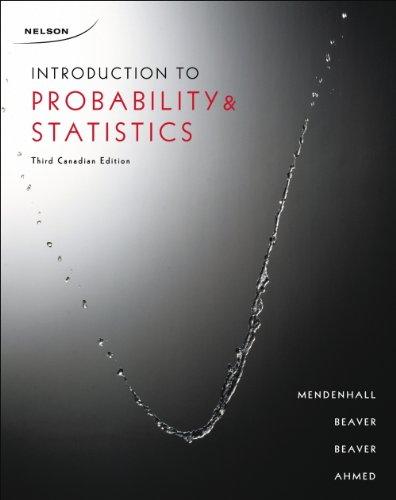d. The researcher was not too sure about the assumption of equality of variances and was under
Question:
d. The researcher was not too sure about the assumption of equality of variances and was under the impression that the population variance of the placebo group is greater than the variance of the treatment group. (i) Do the sample variances present sufficient evidence to indicate that the population variance of the placebo group is greater than the variance of the treatment group? Test the appropriate hypotheses using a significance level of 0.10. Interpret your results. (ii) Estimate with 90% confidence the ratio of the two population variances. Describe what the interval estimate tells you and briefly explain how to use the interval estimate to test the hypotheses. (iii)
Symptoms of diabetes include increased thirst and frequent urination (especially at night), unexplained increase in appetite, unexplained weight loss, fatigue, erection problems, blurred vision, and tingling or numbness in the hands or feet. If your fasting blood glucose level is between 5.5 mmol/L (100 mg/dL) and 6.9 mmol/L (126 mg/dL), you are considered to have prediabetes (impaired fasting glucose), and you have an increased chance of developing diabetes. Other conditions that can cause high blood glucose levels include severe stress, heart attack, stroke, Cushing's syn- drome, medicines such as corticosteroids, or excess production of growth hormone (acromegaly). The Canadian Diabetes Association (CDA) criteria for diagnosing diabetes are met when any of the following results have been repeated on at least two different days: . A fasting blood glucose level is 7.0 mmol/L (126 mg/dL) or higher. A 2-hour oral glucose tolerance test result is 11.1 mmol/L (200 mg/dL) or higher. Symptoms of diabetes are present and a random blood glucose test is 11.1 mmol/L (200 mg/dL) or higher. The fasting blood glucose level of a randomly selected person was measured for seven days and the following readings were made: 7.0, 7.7, 6.8, 7.1, 7.1, 6.1, 7.3. It is reasonable to assume the glucose level distribution is normal.
Step by Step Answer:

Introduction To Probability And Statistics
ISBN: 9780176509804
3rd Edition
Authors: William Mendenhall






